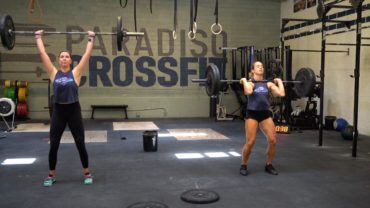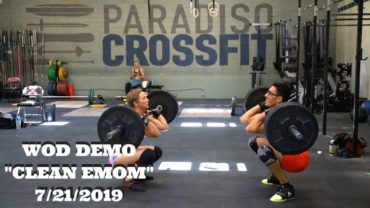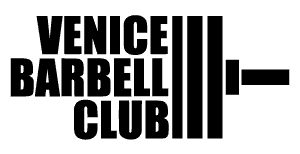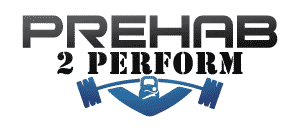Snatch Better
Wednesday 1/22/14
Check out Yoga at 8pm at Venice – Sign up HERE!
Weekly Challenge Update! Hopefully everyone is making an effort to get more sleep. Not only is at least 7 hours important to health and recovery but the quality of sleep is critical. A big factor in how well you will recover while you rest is the consumption of alcohol within a few hours of retiring. This is a common time to have a nice glass of wine to relax but even one drink can affect the release of growth hormone, which is hugely important for repairing muscle and maintaining the nervous system. If you want to get the most benefits from your training and feel rested for the next day’s work, try to abstain from alcohol directly before bed time. Day drinking is more fun anyway.
PreHab
Foam Roll Quads and IT Band
Theraband Shoulder Circles
Scapular Push Ups
Warm Up
Run 400m
2 Rounds:
10 Press
10 Good Mornings
10 Lunges w/Barbell
10 Push Ups
Strength
3 Rounds
2 Strict Press + 5 Push Press – heaviest possible, rest 90 sec.
2o Walking Lunges, heaviest possible rest 90 sec.
Notes: Ideally the lunges would be with a barbell in the front rack position. Due to logistics, most people will perform this with DB/KBs. Try to walk all 20 steps without pausing with both feet in the middle.
Classic Conditioning
9 Rounds:
5 Deadlift (185/125)
5 Handstand Pushups
-15 min cap-
Notes: For the deadlifts, these should be heavy but with perfect form, think somewhere around 75% of your 1RM if you know that. Feel free to go up to the 225/155 weight if you are comfortable with that. For the HSPU, perform a challenging variation that you can maintain full range of motion for each rep. Its ok if you have to do 1 rep at a time!
Advanced Conditioning
“Diane”
21-15-9 of:
Deadlifts 225/155#
HSPU (regionals standard)
Notes: Regionals standards is that your palms must be within a 3’x2′ space from the wall on a blue mat. If you cannot perform the HSPU with full ROM, use a strict standard that you can maintain full ROM!
Cool Down
2 Rounds:
Straddle Stretch, 1 minute
10 PVC Dislocates
Samson Stretch, 1 minute each
A very good example. In slow motion.
How to get a better Snatch:
Mobilize: The Olympic lifts demand high levels of full body mobility, the snatch especially. You must determine and target the mobility issues that limit you ability to hold weight locked out overhead in a full squat. The most common limitations are hip and shoulder mobility but tight ankles, elbows, and wrists all contribute to issues. Use the prehab and mobility tools on a daily basis but use the movements themselves to open your positions. Target your issues every day. Intensive works for a few months will create better positions that only need to be maintained.
Start Over: If you feel like you are just generally lost with a movement, especially the snatch, go back to the very basics of the movement and reengineer how you perform it. This might mean mastering the overhead squat or drilling the position of the bar at the hips but I see too many athletes be satisfied with the same old bad habits keeping them from hitting bigger lifts. Never be afraid to take a step back to allow multiple steps forward.
Study: Watch the athletes in the room who you think understand the movement. What do they do differently. What does the bar do. Watch videos of the best people in the world performing the movement. Listen to exactly what the coaches say regarding positions and never be afraid to ask questions regarding what you think you are doing and how the lift should feel. This also means studying yourself! Break out your phone and get footage of your movement. This is one of the BEST coaching tools.
Come to VBC or get personal coaching: Take a few nights out of your week to come to the Barbell Club at Venice and either do the programming or ask me specifically to watch you snatch. A few sessions can make a huge difference and you can take these coaching cues and tweaks with you to regular class.
Master the following movements and progressions to build toward an efficient and technically sound Snatch:
Exercise #1: The Overhead Squat
Technically a snatch is taking the bar from the floor to overhead in one motion. This does not require a squat but the most weight that a human can put overhead in this manner is by catching the bar overhead in a full squat. It also looks way cooler and requires incredible mobility and skill. That is why we prioritize the full squat snatch. The foundation of this position is the overhead squat. Many athletes see benefit from overhead squatting from a rack once or twice a week in order to strengthen their ability to hold and balance weight overhead while squatting. Performing the movement with even light weight and hold perfect position will greatly increase mobility gains needed for snatching. Perform sets of three reps, very gradually building up in weight so long as your shoulder position is maintained and you can squat as deeply as possible.
Exercise #2: Hang Snatch
I am using the term hang snatch loosely here as what I am more referring to is mastering Position 1 (High Hang) and Position 2 (Knees/Hang) before ever progressing to pulling weight off the ground. Too many athletes rush to do the full movement from the floor without ever learning the proper timing, bar path, and contact at the hips to allow the most efficient and powerful technique. Take time in class and with coaches to truly master the use of the hips before taking weight from the ground. Perform doubles and triples from the hang positions starting with light weight. Focus on making each rep better than the previous and ask your coach to watch you.
Exercise #3: Power Snatch
Once the positions are mastered and you are working you overhead mobility, the athlete should practice snatching light weight with good technique to the deepest possible squat position where they retain good shoulder positions overhead. For many athletes with mobility limitations, this will mean power snatch to an increasingly lower depth until mobility increases. We want people performing the power version to learn the basics of the lift but the priority is landing in a full squat. Work on perfect single reps starting with light weight, working on proper bar path and always trying to catch in a deeper overhead position.
Exercise #4: Snatch Balance
This is a great exercise for those athletes who have the mobility to perform a full snatch but when the weight gets heavy, they revert to the power version and often miss lifts because they are not confident catching those challenging weights in the squat. Heavy snatch balances, where the weight is heaved off of the back as the athlete drops locked out under the weight in an overhead squat, are critical to teach speed and confidence under the bar with those more daunting weights. Perform triples at 80% percent of your best snatch, working on footwork and perfect overhead position. Once this becomes comfortable, work up to heavy singles, shooting for more than you best snatch.















